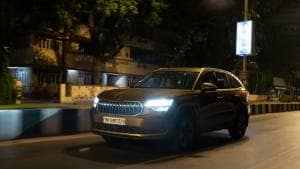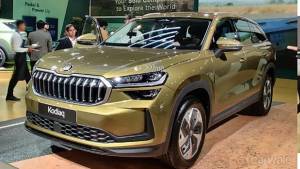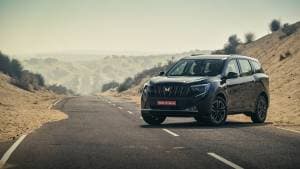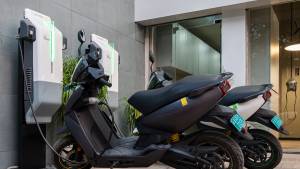Comparison: Skoda Kodiaq vs Ford Endeavour vs Toyota Fortuner
Skoda doesn't make SUVs very often, but their maiden attempt - the Yeti - was easily one of the most capable cars to buy in its segment. The polarising design, however, estranged many in our otherwise SUV loving market, pushing the car to the uninspiring end of the sales charts. Therefore, for Skoda's second take at the SUV genre, designer Jozef Kaban has penned a new design direction that could only take the sales charts upward. Replacing the Yeti will be the Karoq that arrives in 2018, but setting the benchmarks for Skoda's SUV ambitions is the Kodiaq. It is also the first SUV flagship for the brand, which means it not only pips the Superb on pricing, but also on kit and design sophistication. While that makes it quite a tempting offering in the premium space, it also puts the Kodiaq in the path of the Toyota Fortuner and the Ford Endeavour - two brutes that have virtually trounced over all competition that ever dared to spawn in their territory. Will the Kodiaq meet a similar fate too?

Design
The design approach of the three SUVs is quite diverse and there is something for everyone. For those looking at a classic boxy silhouette and an imposing face, the Ford Endeavour does it right and neatly combines burly retro styling cues with new age equipment. The Toyota Fortuner did the same in its previous generation, but now presents itself as a SUV that is more stylish, lean and one that mimics the design and form of the Lexus models from the pricey end of Toyota's portfolio. The Kodiaq is futuristic and premium in its design and looks fit for modern cityscapes, club visits and four digit valet tips. The sharper lines and the bohemian crystal-work inspiration for the LED lighting elements is one of the best that we have seen from the Czech carmaker. With its polished stance, it even outshines some of its German siblings in appearance and premium feel.
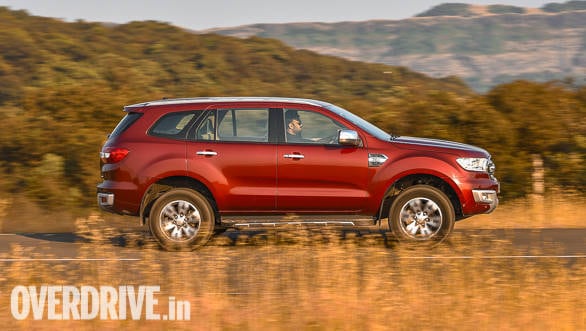
I personally prefer the design of the Endeavour though - it's got the stance of a typical full-size SUV and fits nicely into the urban and natural jungles. The other two seem a bit too sophisticated to get their knees dirty or their skin scratched and in that sense they don't feel as rugged as I would like my SUV to be. If dimensions matter to you, the Endeavour is the largest and the Kodiaq is dwarfed by the brutes when they stand together.
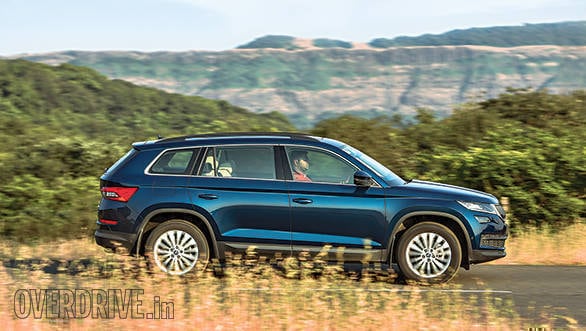
Cabin and practicality
The dimensions become even more evident when you step inside the cabins as the Endeavour and the Fortuner offer significantly more room. Getting in and out of the Kodiaq is as easy as a compact crossover and once inside, you are greeted by the plush materials and millimeter perfect fit and finish that is typical to newer Skoda cars. The sheen of the dashboard inlays, the crispness of the displays and the slick behavior of the digital interfaces is on par with what the iPhone X generation would expect. It's even got the best sound system of this test. All controls fall easily at hand and are exactly where you expect them to be. 12-way electrical adjustment for both the front seats lets their occupants fine tune the lumbar support a little bit better than their rivals.
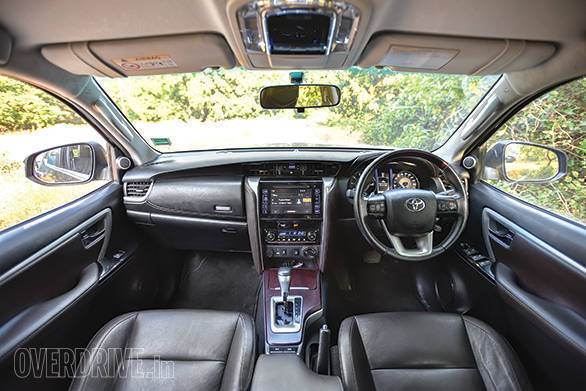
Visibility is decent, but the Kodiaq's driving position is more car like in comparison to the other two. Take your pick. Typical to Skoda, there are nifty little features that give it a juicier sales brochure, for example the umbrellas stowed in the front doors, the clever door edge protectors that pop out when you open the door, or a removable boot illumination lamp that doubles up as a LED flashlight. Like its corporate sibling, the VW Tiguan, there is certainly a better feel good factor in the Kodiaq's cabin as compared to its rivals, but there is no denying that the Fortuner and the Endeavour are a size larger. That not only gives them a roomier third row, but also puts the cabin size in line with the expectations of this price bracket.

The cabins of the Endeavour and the Fortuner need the users to climb into them like a typical SUV. The design of their interiors though, feels 2015 in comparison to the Kodiaq's new-age appointments. The Endeavour's cabin has a welcoming and airy feel to it with its bright leather upholstery. The infotainment with its three pot layout looks good, but the controls for it, mounted on either ends of the steering wheel, need getting used to. Despite having the largest cabin of the lot, the cooling efficiency of the air-conditioning was the best in the test for
all three rows. The blowers in the second row were a bit noisy for our liking, but we will give the Ford a benefit of doubt, given the age of our test car. That also explains why we didn't like the sluggish infotainment system, which has now been replaced by a slicker SYNC 3 system in 2017 model year Endeavours.
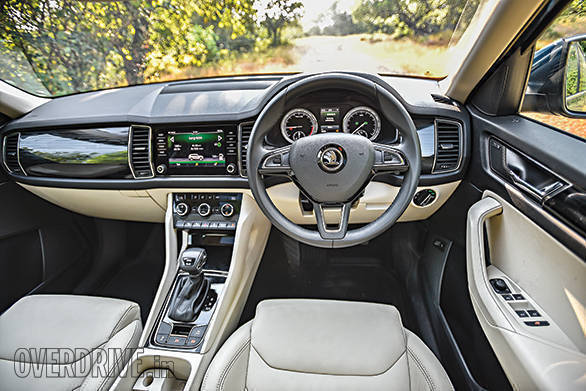
If infotainment systems were deal breakers, the Fortuner would have to go home right away. But there is much more to these SUVs than just that - two of which are space and comfort. The Fortuner offers ample space and comfortable seating though it could have done with better headroom. We don't like the hanging mechanism for the third row seats as they often kept popping out of their hooks and landing on the luggage underneath. The flush-folding mechanism for the third row seats in the Kodiaq and the Endeavour is far better by design, is more versatile and liberates more cargo space too. The Fortuner drops points further as the dark upholstery, high window line and the lack of a sunroof prevent the cabin from feeling as airy as the Endeavour or the Kodiaq.
Of the three cars, the Endeavour edges ahead for providing more accommodating seats with better cushioning and contouring, clearer visibility of the road, a roomier feel in the cabin and better space management overall.
Safety
All the three cars are very closely matched on the safety front. All offer traction control, vehicle stability control, antilock brakes and front, side, and knee (driver) airbags. While the Kodiaq has bagged a five star safety rating at the Euro NCAP tests, the Fortuner and the Endeavour claim five star ratings at the Australian NCAP tests. The scoring is closely matched, but the Ford's imposing face isn't as friendly with the pedestrians as the Kodiaq or the Fortuner.
Drivetrain, Ride and Handling

This is the part where the brochure claims go out of the window. The Skoda Kodiaq's on-paper figures suggest that the 150PS/340Nm output from its 2.0l four-cylinder diesel engine make it the least powerful SUV of this test. Those figures could also have you believe that the Kodiaq feels underpowered compared to the brutes. But the good news is, that it is in fact quicker to the ton than the Fortuner and the Endeavour, despite their larger engines. The power band lies between the 2,500-4,000rpm mark and the Kodiaq cruises at 100kmph in top gear at a relaxed 1,600rpm. Where it loses out to the other two is in the in-gear acceleration under full load. In a nutshell, the Fortuner or the Endeavour offer better drivability, overtaking and load bearing abilities than the Kodiaq - a classic example of displacement advantage. Surprisingly however, the Kodiaq doesn't pip its rivals on fuel economy despite being lighter and better ARAI figures. It's numbers are just a smidge lower than the Fortuner, in fact.
The Fortuner was the most fuel efficient in that regard though it needs a relatively higher engine speed of 1,900rpm to cruise at 100kmph. The engine isn't as refined as the Kodiaq's motor, nor is it as punchy as the 3.2l unit in the Endeavour. Its gearbox isn't as quick as the DSG box in the Kodiaq either. But the drivetrain and the gearbox are hard to find faults with and reward the driver with on tap power for all the common driving scenarios you will put this SUV through. It feels quite involving to drive too. The automatic transmission seldom needs you make a manual selection and for the more serious off-road enthusiasts, there is an optional manual transmission as well. The 4WD system won't break a sweat even if you were to make an off-season trip to Ladakh and that go-anywhere capability is what gives the Fortuner its cult following.
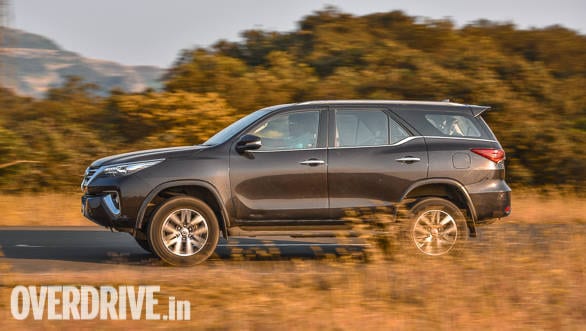
The Endeavour's motor delivers the hardest punch of the trio with best outright and in-gear acceleration. Fuel economy takes a hit in the bargain, but the option of a 2.2l motor should take care of the economy conscious buyer. The engine is also surprisingly refined and becomes vocal in its gravelly tone only past the 3,000rpm mark, which is a zone you won't visit often given the meaty torque it offers low down. The gearbox works as intended too, be it city, highway or off-road use. The Endeavour's 30° approach and 25° departure angles are on par with that of the Fortuner, but the Ford has marginally better ground clearance and water-wading capabilities.
Last year we had driven the Fortuner and the Endeavour to the snowy regions up north to find out which one was the better of the two when the going gets tough and Fortuner edged ahead on the merit of the its manual transmission. Will the Kodiaq do all of that? We don't know yet. Remembering our trysts with the Yeti, we have high hopes from it, but that is a story for another day. In all fairness, however, the Kodiaq doesn't make any pretensions about being an off-roader. Even the driving modes are pretty urban don't have a section for broken or gravelly terrain. The 4x4 badging peppered on the car then, inclines more towards a torque vectoring safety mechanism on slippery surfaces, than a feature for outright off-road use.

All three cars feel stable at highway speeds. The Fortuner has slightly better ride quality though. Typical to a body-on-frame layout, it works best under a full load and can feel relatively rigid with a lighter load. The Endeavour is on par with the Fortuner's bump absorption, but there is a fair bit of pitch and dive in comparison, giving it second place in the ride and handling department. The Kodiaq handles curves better than the larger SUVs, feels more nimble to drive, but isn't as supple or silent over harsh bumps, ruts or joints. In that sense it feels more station wagon than SUV. If you are upgrading from any Skoda that isn't a Yeti, you will also be surprised to find a fair bit of body roll and an unexpectedly light steering setup. But it's all in favour of making the Kodiaq a comfortable and convenient car to drive in the urban environment, and that it does pretty well.
Verdict
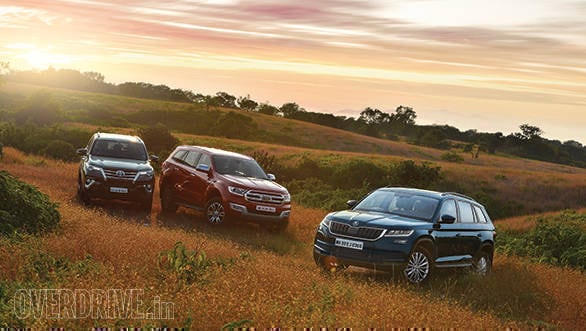
Summing it up is pretty simple this time, despite having such closely matched vehicles at hand. The Fortuner garners big sales figures and that is courtesy of excellent packaging and Toyota's robust after sales network and that will continue to work in its favour. It is still very capable across terrain changes, but it's stylish new form may not want you to dirty it often. The Kodiaq is more sophisticated in that sense and if you would rather have that over bulk and muscle, then this is the car for you. It has impeccable fit and finish and is in fact a more economical alternative to the German crossovers. But, its the Ford Endeavour that has the size, the stance, the firepower and the go anywhere capabilities that you would expect from an SUV in this price bracket. And you could still arrive at a corporate or a page three party, without your vehicle looking too utilitarian. It also happens to be the best priced SUV of this lot and a longer list of variants and options means that there is a better chance of finding the right deal. So all things considered, the Ford Endeavour is the most well balanced package in this comparison and is the winner of this test.
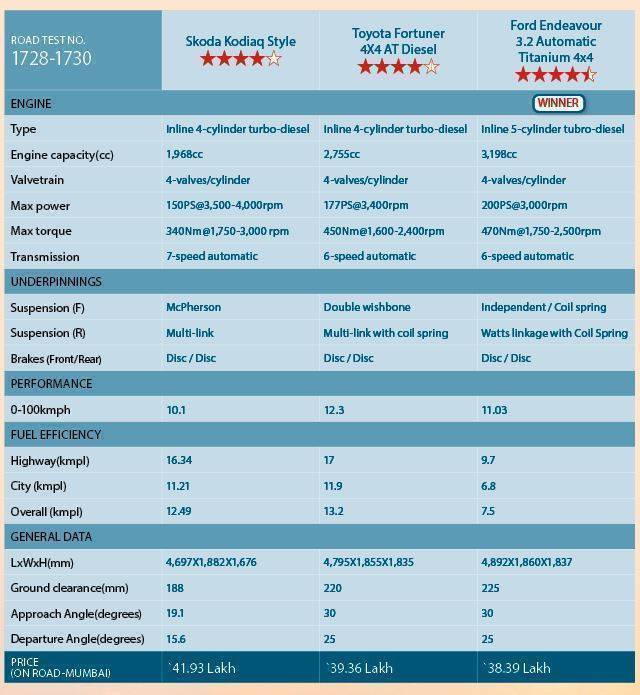
Starts Rs 32.75 Lakhs
1996cc
Automatic
170
420
13.9 Kmpl
Starts Rs 29.98 Lakhs
2755cc
Automatic
166
500
-NA-
Starts Rs 34.99 Lakhs
1984cc
Automatic
190
320
12.78 Kmpl
